Subscriber Benefit
As a subscriber you can listen to articles at work, in the car, or while you work out. Subscribe NowWhen Jason Shelley pulls into a parking garage each morning near the PNC Center just a block and a half off of Monument Circle, he rarely has to climb more than a few floors to find an empty space. It’s a stark difference, he said, from before the pandemic when he often had to circle all the way to the roof.
And later, when Shelley heads out for lunch, the sidewalks outside his office are often sparse, and some of his favorite restaurants are no longer in business.
“It’s a little sad,” said Shelley, executive director of the Indiana chapter of the American Institute of Architects. “There just doesn’t seem to be the consistent hustle and bustle that downtown used to have.”
But less than a mile east, along Massachusetts Avenue, the sidewalks are often swarming with shoppers and sightseers. A diverse collection of restaurants, from sushi houses to hot chicken joints, has continued to open along the corridor, which is now anchored by the $300 million Bottleworks District, a former Coca-Cola bottling plant transformed into office, retail and residential space. A second, $100 million phase is underway at Bottleworks with more office and retail space.
“We love Mass Ave and our corner of downtown—before, during and after the pandemic,” said Jennifer Dzwonar, managing principal at Borshoff, an advertising and public relations agency. Borshoff moved its offices onto Massachusetts Avenue 16 months ago from its former home a block away, above Needler’s Fresh Market on North New Jersey Street.
The contrast paints a picture of two downtowns and how they are recovering from a pandemic that emptied office towers, crippled retailers and sent a shock wave through the economy.
Many parts of downtown are thriving—particularly neighborhoods, where rents are rising, people have to stand in line for a lunch table, and investments are flowing.
Other parts—especially downtown’s central core, where many workers might come to the office only once or twice a week—are limping along, pockmarked by vacant storefronts, panhandlers and crumbling sidewalks.
“I think downtown is at a crossroads,” said Doug Noonan, professor in the O’Neill School of Public and Environmental Affairs at IUPUI. “I think Indy’s got potential to continue to strengthen the downtown and revitalize … but it’s not a foregone conclusion.”
All told, an eye-popping pipeline of nearly $9 billion in development is either underway or set to begin downtown in the next couple of years, including a $500 million convention center expansion with an adjacent hotel and a $300 million proposed redevelopment of the CSX building across Pennsylvania Street from Gainbridge Fieldhouse.
A couple of miles north, construction cranes hover over a sprawling, 44-acre footprint, where Indiana University Health is building a $4.3 billion hospital complex just south of the health care system’s century-old Methodist Hospital near Capitol Avenue and 16th Street.
And to the west, across the White River, on the grounds of the former General Motors stamping plant, Elanco Animal Health Inc. has started work on a $100 million headquarters campus to replace its current offices in Greenfield. Along the east bank of the river, Indianapolis-based Keystone Group is planning a $1 billion development that will include a soccer stadium, hotel and apartments.
And that list of projects doesn’t take into consideration much-anticipated redevelopments of Circle Centre Mall, the former Marion County Jail, a downtown heliport and several other sites still in their earliest planning stages.
Promising signs
But like countless cities across the country, Indianapolis is struggling to recover from the effects of the pandemic. The biggest challenge: the number of downtown workers who are spending more time working from home and other locations. Remote work is a benefit that many enjoy—even now demand—but it’s one that is shrinking the downtown office sector, a traditionally significant player in the downtown economy.
Yet there are promising signs. People are moving downtown in large numbers—the area’s apartment occupancy rate grew in 2022 to levels not seen since before the pandemic. Downtown has nearly 29,000 residents now, up from only about 15,000 in 2010. And developers expect to bring 900 more apartment units online this year—on top of 3,000 added over the past five years.
The tourism industry, too, is reporting a rebound, with hotel occupancy rates, conventions and meetings, and attendance at downtown museums and parks all rising last year, although still below pre-pandemic levels. Attendance at the Eiteljorg Museum of American Indians and Western Art, for example, climbed 53% last year, edging close to its 2019 total.
Large downtown law firms, which occupy nearly a million square feet of combined space, say they plan to remain in the heart of the city, even though some are shrinking their footprint to reflect the new reality of a hybrid workforce.
And some downtown workers say they’re starting to see a rebound in business lunch crowds, people walking along the Central Canal, and crowds at midweek Pacers and Indians games.
“It’s good to see so many people who want to hit a restaurant for a business lunch or breakfast,” said Charlotte Westerhaus-Renfrow, a professor of business law and management at the Kelley School of Business at IUPUI. “I’ve seen a resurgence of that.”
Hybrid is here to stay
But experts say the future of downtown can’t depend on the return of workers.
Long after COVID restrictions were lifted, companies of all sizes have continued to allow their employees to work remotely at least a few days a week, resulting in lower daily foot traffic in areas that once swarmed with people. An IBJ survey of large employers shows that’s not likely to end, as companies increasingly accept hybrid schedules as the status quo.
The total number of times workers visited downtown offices last year was 38% lower than in 2019, according to Placer.ai, which calculated the figures using proprietary location intelligence from smartphones, laptops and other devices.
That means Indianapolis is unlikely to return to a time when more than 100,000 workers swarmed downtown daily.
How that will transform the look and feel of downtown in coming years remains largely unknown, although the work-from-home transformation and other economic impacts of the pandemic have already led to the closing of dozens of shops, bars and eateries, from Sahm’s Cafeteria in the OneAmerica Tower to Primanti Bros. in Circle Centre Mall.
Some economists say the shrinking office sector will continue to ripple through the economy, as workers spend less money on downtown parking, lunches and even drinks or a ballgame after work.
“This represents a potentially large negative shock to the demand for services in formerly highly occupied office centers and campuses,” said Michael Hicks, director of Ball State University’s Center for Business and Economic Research.
And some longtime small-business owners say those changes have left downtown wanting.
“I just think it translates to less energy overall,” said Jill Mendoza, president of IDO Inc., an interior design company with 15 employees at 601 N. Capitol Ave., just a few blocks from the Statehouse. “It does have a huge impact on the vitality of restaurants, stores, all those things.”
But even hybrid work creates an economic impact.
Borshoff, the advertising and public relations agency, has one of the most flexible hybrid work models, requiring employees to be in the office only six to eight days a month. Yet employees, when they come downtown, “still have breakfast meetings, lunch meetings, dinner meetings, drink—all of which tend to happen around downtown,” said Dzwonar, the firm’s managing principal.
A turning point
The pandemic-induced changes have pushed downtown to a critical moment.
“I think the pandemic obviously had an impact, and work from home obviously has an impact,” Taylor Schaffer, president of civic group Downtown Indy Inc., told IBJ. “But I also think that downtown really is in a pivot point, in terms of who downtown is for and how downtown operates.”
Schaffer said downtown’s booming residential base will be a major part of the way downtown reinvents itself. With so many multifamily housing projects recently completed—including the transformation of the former AT&T office tower into 220 Meridian and the brand-new Block 20 building next to the Athenaeum—and many more under construction, the city has an opportunity to embrace its regional center in a more robust manner.
To that end, Downtown Indy Inc. intends to use more than $3.5 million from the city’s federal American Rescue Plan allocation to “think about how we are responding to, caring for, maintaining, reprogramming and activating downtown 365 days a year, not just when we have the opportunity to host a major event.”
And there are plenty of challenges to respond to—most notably, a perception and sometimes reality that downtown is no longer the clean, safe and vibrant place it was before the pandemic and a weekend of violence in late May 2020 following the police killing of George Floyd in Minneapolis, an incident that led to social unrest in cities across the country.
Homeless people camp out in storefronts, on Monument Circle, below the Artsgarden and in other highly visible areas of downtown.
But an IBJ analysis of the city’s crime data from 2010 to 2021 found downtown is among the Indianapolis Metropolitan Police Department’s safest areas.
Violent incidents in the Mile Square were down in 2022 from the pandemic peak years of 2020 and 2021 in all categories except robberies, which were up 43%, from 56 to 80.
In the Mile Square, homicides dropped to four in 2022, from six in 2020 and five in 2021.
Across IMPD’s entire Downtown District, which stretches from 10th Street and Interstate 65 on the north to Morris Street on the south, and from the White River on the west to the I-65/I-70 leg on the east, violent crime as a percentage of all reported incidents increased from 2010 to 2021, up to 22% from 14%.
IMPD reported 15 total homicides and manslaughters in 2020 and 2021 in the Downtown District, more than it had in the previous nine years combined. Homicides dropped 16% citywide in 2022, but IMPD has not released a district-by-district breakdown.
Many in the region give downtown low marks for cleanliness and safety. “It feels far less safe, and there doesn’t seem to be a sense of pride,” said Patty Prosser, co-founder of The Center for Leadership Excellence, a leadership coaching firm, who lives and works downtown.
City officials say they are working to address the problems so downtown can rebuild its reputation and develop a new vision.
Mayor Joe Hogsett last year launched a “downtown resiliency strategy” aimed at strengthening the urban core with investments in housing, recreational public spaces and infrastructure upgrades.
“There’s no question that downtown is the economic engine that drives central Indiana,” Hogsett told IBJ.
He pointed to the billions of dollars of investments in the city’s projects pipeline—including the $500 million Indiana Convention Center expansion and hotel, the $100 million Elanco corporate headquarters, and the $250 million Elevator Hill office, housing, retail and entertainment district on the old Angie’s List site just east of the I-65/I-70 leg—as game-changing developments.
“The totality of the level of investment in development and economic revitalization and recovery, I think, is astounding,” said Hogsett, a Democrat who is running this year for a third, four-year term. “I think the next five years could be perhaps the most exciting five years in our city’s history.”
Developers remain bullish
Overall, dozens of development projects are under construction or in the pipeline, including hotels, apartments, hospital expansions and retail-entertainment districts.
Some are planned for what’s traditionally been the central office area, including a $175 million redevelopment of the block that includes the Indianapolis City Market and the Gold Building. The joint venture by Citimark and Gershman Partners is expected to create more than 400 apartments as well as retail space.
At Pan Am Plaza, Kite Realty Group Trust is planning to build a $300 million Signia by Hilton hotel that will connect to new convention center meeting and ballroom space. And Chicago-based The Gettys Group is spending $54 million to convert the former King Cole office building at 1 N. Meridian St. into a Motto-branded Hilton hotel.
But many of the biggest projects are spread out over a sprawling area that city officials call the Regional Center, a 6-1/2-square-mile area that extends from 16th Street on the north (plus a narrow strip a couple of blocks on either side of Meridian Street up to 30th Street) to Interstate 70 on the south, and a little past the White River on the west to the I-65/70 leg on the east.
Within that area, developers are planning IU Health’s massive hospital expansion south of Methodist Hospital, Keystone’s Eleven Park on the site of the former Diamond Chain Co. and the expansion of the Bottleworks District.
All that investment will doubtless boost local restaurants, retailers and suppliers as it ripples through the region. But it is unlikely to flow evenly throughout downtown.
Noonan of IUPUI’s O’Neill School said the areas of downtown most likely to thrive are those anchored by large institutions, such as IU Health, IUPUI, Eli Lilly and Co. and other prosperous employers. “Those would be the ones that I would look at as good bets,” he said.
Developers say they remain cautiously bullish about downtown.
Phil Bayt, an attorney who represents Herb Simon-backed Boxcar Development LLC, the group that has announced plans to build apartments and hotel rooms on the former CSX site, said he’s encouraged by the amount of investment activity downtown.
He expects it to “transform downtown not only back to the vibe that it had before [the pandemic] but really to something even better.”
But to keep that momentum moving, downtown needs more people. It would help if companies found ways to bring more workers downtown, he said, and more people living downtown helps, too.
Bayt isn’t alone in his assessment. Jim Crossin, vice president of development for Indianapolis-based Flaherty & Collins Properties, said his firm has “a little bit of nervousness over how slow workers have returned to downtown.”
But, he added, “We’re pleasantly surprised that the multifamily market is doing so well—it’s sort of evened out, even though the workforce hasn’t returned as much as we’d like.”
Flaherty & Collins owns multiple downtown properties, including 360 Market Tower, Axis, Lockerbie Lofts and Millikan on Mass. And while it doesn’t have any downtown projects under construction now, it has submitted bids or proposals for redevelopment of several city-owned parcels, among them a parking lot north of Old City Hall.
The city’s Department of Metropolitan Development has not yet chosen a partner for the Old City Hall project, one of many it’s managing as it works to unload property it no longer needs.
That’s in part the result of the 2022 opening of the Community Justice Campus in the Twin Aire neighborhood, a couple of miles southeast of downtown. That moved Marion County’s jail and courts out of downtown, which is creating opportunities for developers on the east side.
“Obviously, the demand shows that there is interest in downtown, both living and investing here, so that’s something very positive that we’re trying to ride,” said Rusty Carr, interim director of the DMD.
“We see downtown is still rebounding, with folks who want to invest billions of dollars here,” Carr said. “And I think we’re at the point where we understand our opportunity to also kind of take advantage of the momentum and really set the course” for those properties.
He and others with the city, including Deputy Mayor Scarlett Andrews, have predicted that office space will continue to play a role in some renovations and new construction projects in the city’s core. But they expect much of the development coming down the pike to focus on residential space or entertainment offerings.
Mall remains a mystery
One of the most obvious examples of downtown’s changing dynamics is the decline of Circle Centre Mall as a retail center. The mall, which opened to much fanfare in 1995, was built as a public-private partnership at a cost of $319.5 million.
But after a strong early run as a center of downtown commerce, the mall lost its anchor stores and many of its key smaller stores. What’s kept the mall afloat are its restaurants, particularly ones that are exterior-facing—places like Ruth’s Chris Steak House, Harry & Izzy’s and the recently opened Sugar Factory.
Indianapolis-based Simon Property Group, one of the mall’s original owners and the company that managed Circle Centre for more than two decades, gave up its involvement in 2021, selling its 15% share of the Circle Centre Development Corp. and turning over operations to Chicago-based firm JLL.
Now, the ownership group is considering ways it might redevelop or reuse the 2-1/2-block property, which was developed by combining a number of existing buildings and historic facades with new structures. The group has solicited and received ideas and suggestions from several design firms for rethinking the property.
But Adam Collins, a partner at Indianapolis law firm Wallack Somers & Haas who represents Circle Centre Development Corp., told IBJ the discussions remain preliminary and the group is not ready to announce any plans.•
Please enable JavaScript to view this content.



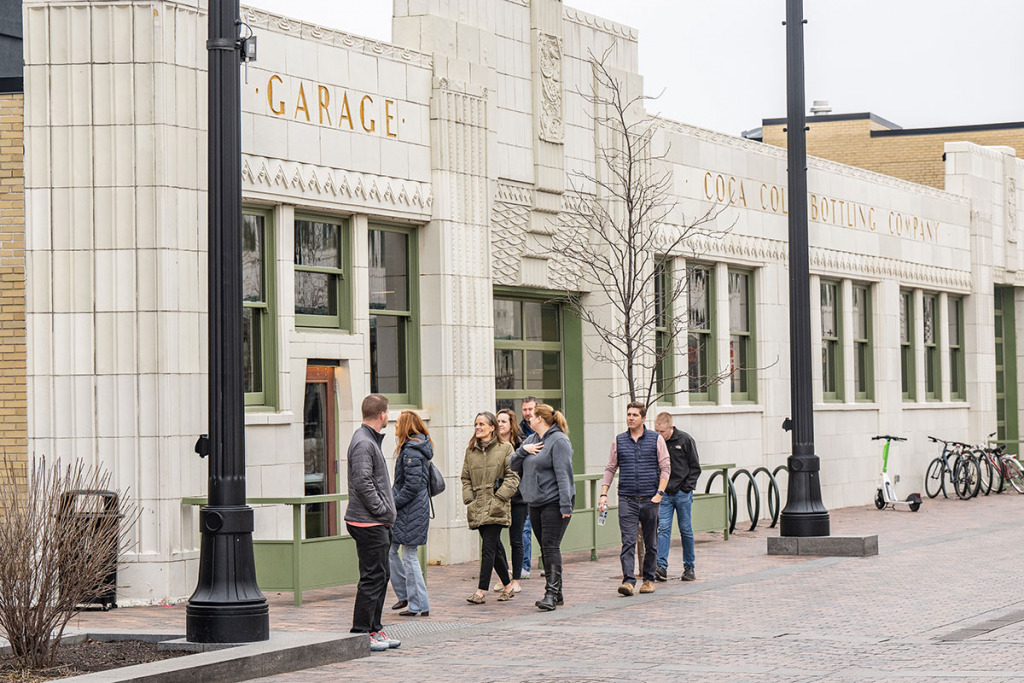

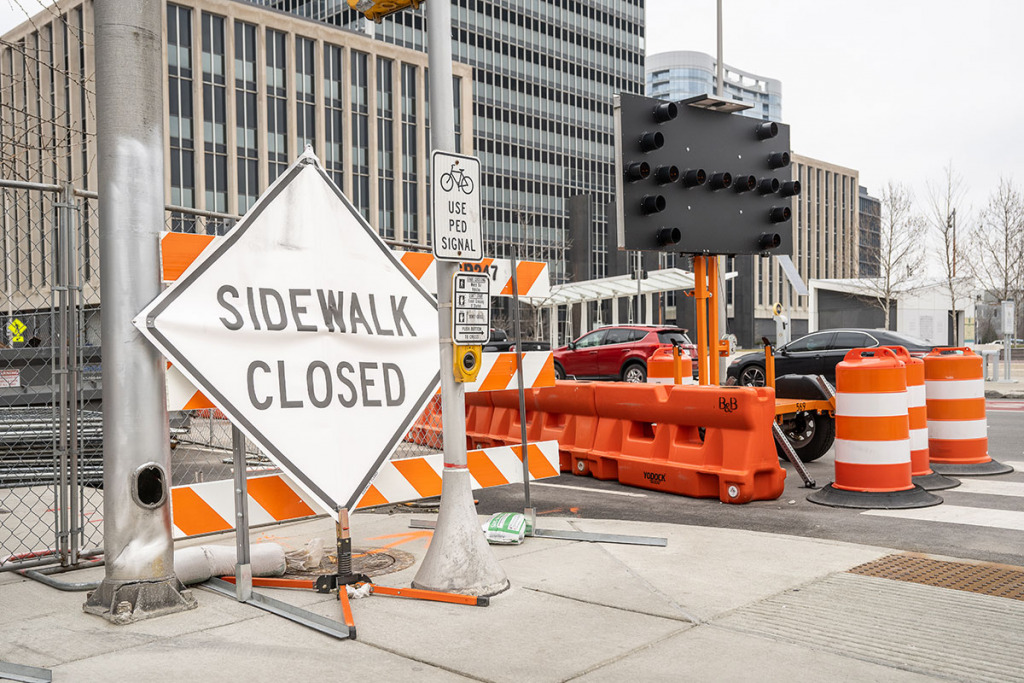
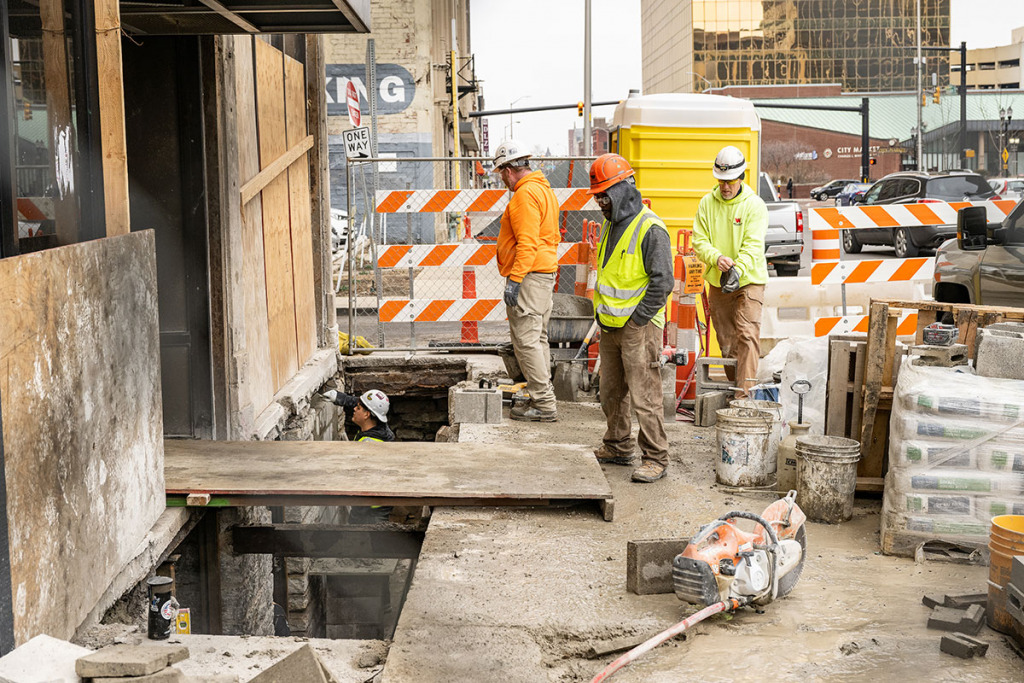
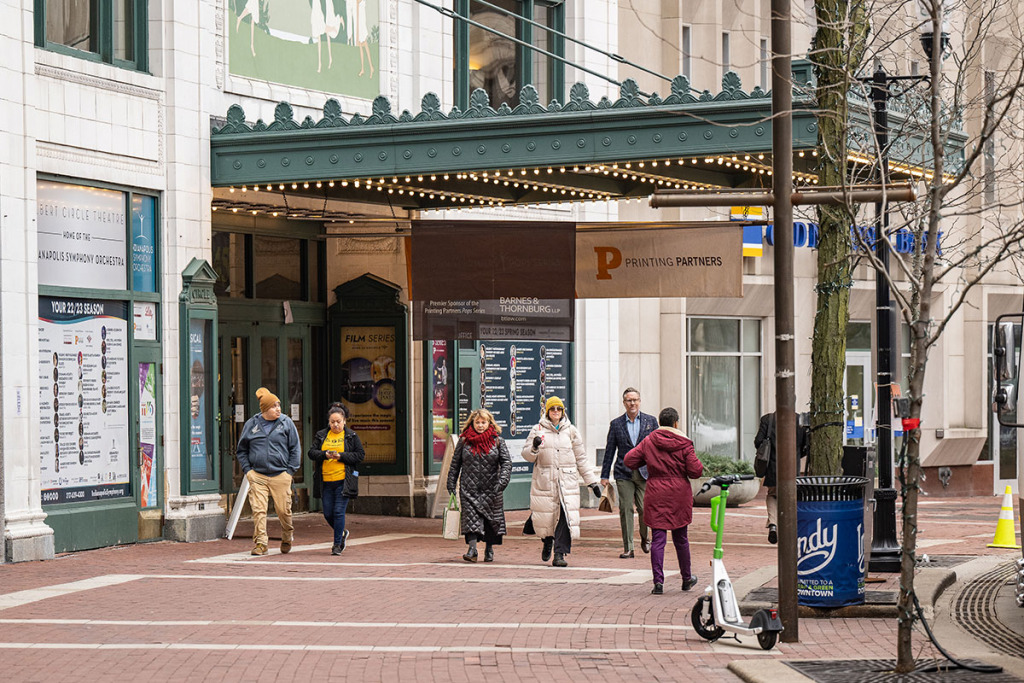
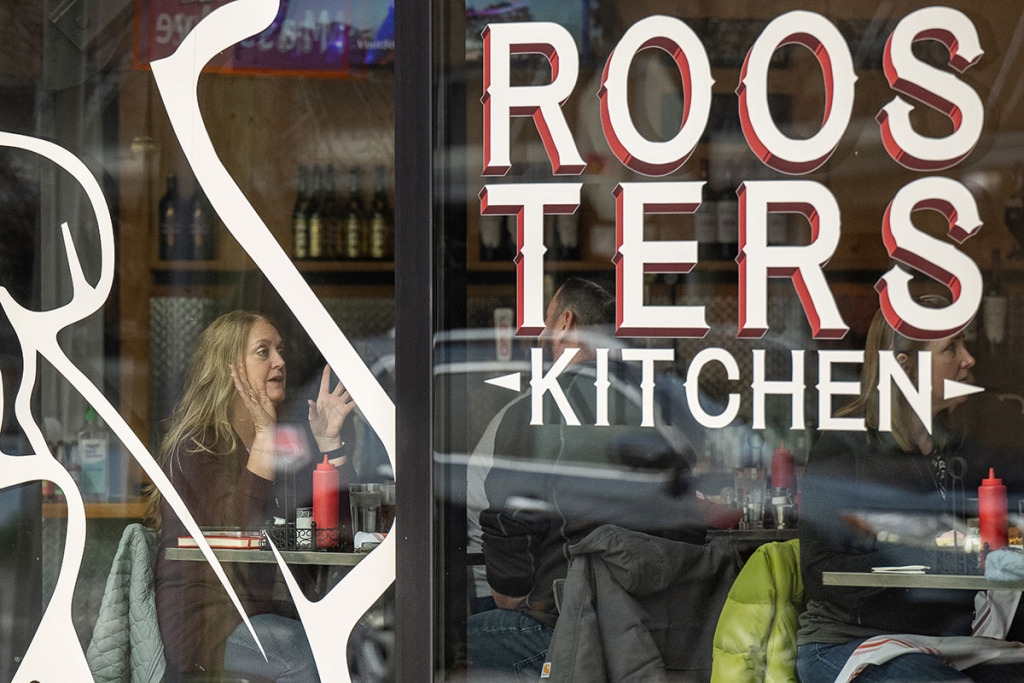
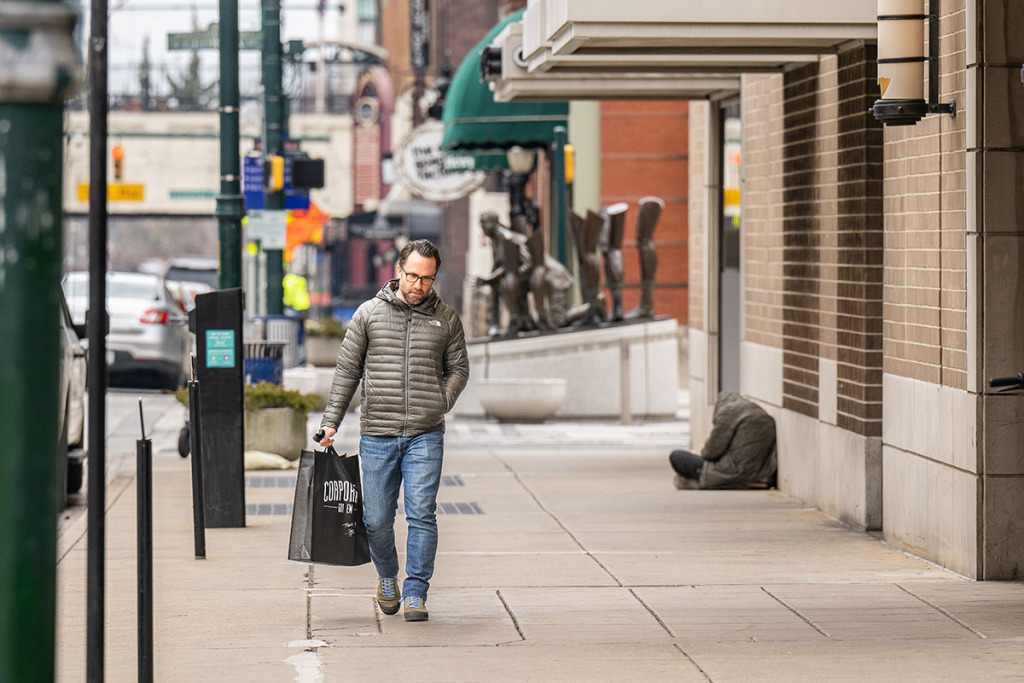
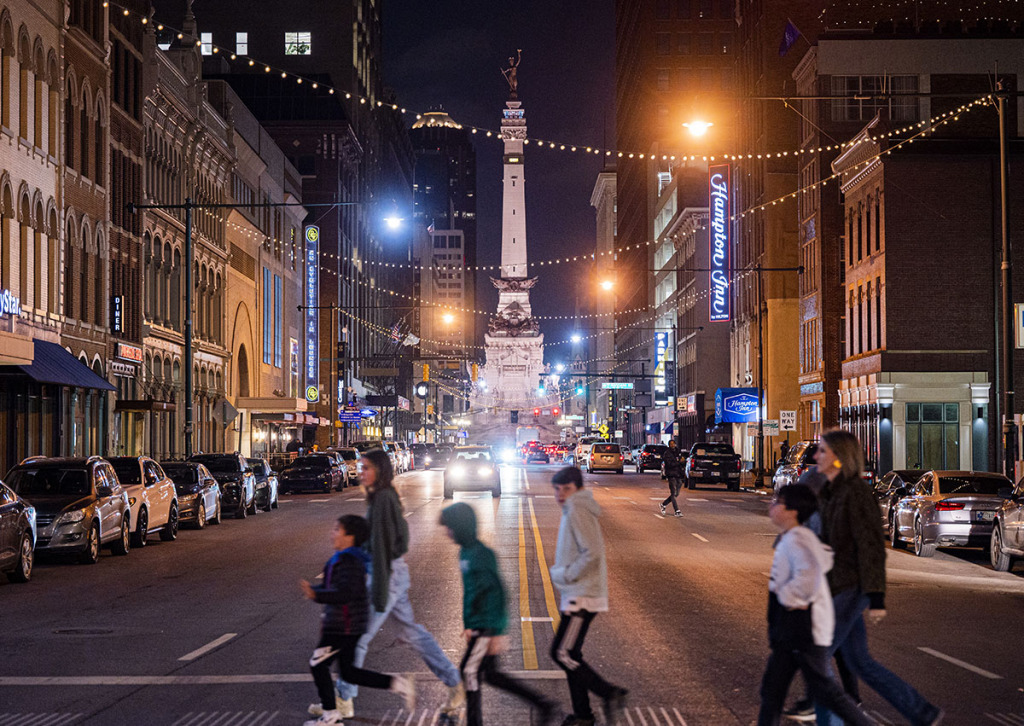







This essentially comes down to a shift in Downtown land use. There is less office space & more apartments, hotels, and tourism-serving land-uses. This trend started before COVID, but it was accelerated significantly by COVID.
How much money would it cost to convert an office tower to apartments? Would the cost be on par of building new?
After walking through the mall at lunch it was very depressing. Vacant stores and restaurants and no people. Architecturally the space still is incredible but very different than several years ago. I kept thinking what could be done in the City to help the mall. I feel a big change maybe to add a casino downtown to spur more development and reuse. Union Station and the mall together could create a unique casino space and bring more life to downtown. I am sure this is not an option with the current legislature, but just a thought to transform the two facilities. Another issue is that the mall exterior looks worn. Sidewalks are in bad shape and stained along Meridian and Washington Streets. The planter beds along Washington Street are not maintained and are not attractive As a comparison to Indy visited Columbus, Ohio last month the downtown sidewalks, landscape and streets were immaculate, very well maintained and pothole free completely different than Indianapolis. I was very impressed.
Connecting Union Station and the Mall were discussed even as the mall was being built. Some “key people” involved, did not wan to see that happen. If you look at the bridge connecting the mall to the Omni Hotel, you will notice that it could have gone right down that alley alongside the Omni and right to the Mall. Indeed that was the plan but was snuffed. I did a lot of the drawings for some of the those enclosed bridges. Maybe the time is right to complete that segment.
This is a nice long article. I was downtown on Wednesday, and I think the energy and cleanliness were better than it had been for the last few months.
Get building!!
This and previously published articles enforces private Investment sees huge potentialtial in our ever-growing city. The misfortune of the pandemic has launch fresh opportunities to reinvent Us. I believe government should speed up its momentum to keep up with adventure capitalists. I’ve been a downtown resident and business owner nearly 25 years and am pleased to watch private Investment growth.
Daniel Burnham, famed architect who inspired Chicago to become the first city with skyscrapers, urged city planners to “make no little plans, (for) they have no magic to stir men’s blood and probably themselves will not be realized.”
Those who worry that downtown Indianapolis cannot fill all the new housing that is planned should ask themselves, how can our peer cities do these things but we cannot?”
Naysayers never succeed at anything because they never try anything. Small thinking yield small results. Thankfully there are some here who see the future, and are willing to risk fame and fortune to build for it.
These are our Daniel Burnhams for Indianapolis in the 21st century.
Well said Brent
Brent B.
Agreed!
We must think big and creative ( thinking outside the box is important also )
That’s right! It’s coming!!!
Indy is important to the entire State as the front door and face. If it’s Indy no where then it is Indiana no where. The world sees Indiana as Indy
In every city the downtown is the heart and the face of the community.
Every successful downtown is lived in not just a place where people commute to work. Housing is the corner stone and hotel rooms is short term housing.
Competition from peers clearly exists: Columbus, Cincinnati, Louisville, and Nashville. Indy must try hard but must focus on aspects pivotal and unique to the city. Sadly, some of the greatest impediments to progress are proposed in the statehouse.
Improve downtown as a use-diverse area incorporating residents, convention attendees, and office workers. But residents should include empty nesters and families across a broader range of incomes. Central city schools must be excellent – one recognizes this as a tall but necessary order.
Useable and safe open spaces is essential as is convenient foot and non-motorized transportation.
One questions roadway decisions auch as the Washington-Maryland couplet as well as the freeway wall separating the CBD from the city (bad planning and bad design continued with the lastest I-65/I-70 redo). And that awful freeway junction southeast of the CBD should be decked so the Virginia Avenue could once again resemble a street rather than a viaduct.
I no longer live in Indianapolis but would love to see the city return to the safe clean place it once was. I always said Indy should get advice from peer cites like, Columbus, O, San Antonio, Nashville, TN and others. Also don’t continue take ten, twenty or thirty years to build skyscrapers and make road improvements. Someone said thinking out of the box is key to continued to grow. One more thing, streets in Indy are terrible! Sunken manholes, potholes, steel plates with no warning you’re about to hit one, all need to be addressed. Very sad the main north-south thoroughfare; Meridian street is riddled with sunken manholes, potholes, patches over old patched pavement. From 16th south to near Monument Circle. Would love to see Indy return to a beautiful city.
Eric G.
Agreed.
Would love to see the downtown corridor along Illinois Street from
the bus station terminal up to Ohio Street and over to Monument Circle
be clean and well maintained. This corridor is very important because
most out of towners ( convention goers ) must use it when seeking
restaurants, entertainment venues, retailing establishments, and going to
see Monument Circle.
That whole Illinois Street corridor looks very bad and is what many people
will remember about downtown Indianapolis long after they leave.
** City leaders really need to ask themselves this. With all the conventions,
major sporting events, and special events that we host,
– Why AREN’T WE drawing out of state investments, jobs, and economic
development into our downtown ******
Nashville is booming, yet 30 years ago was way behind Indianapolis in growth
and development. What spurred their growth but has not spurred ours.
The problem starts at the top. Worst mayor we’ve had in many decades.
Knock it off
$9 Billion is definitely a start and hopefully all these projects get completed. To be honest, Indy has no choice but to build up the city and give it a fresh new and bold look for the future. Indy definitely needs more modern sleek glass buildings. A cities downtown if done right, gives visitors an impression of a successful city that’s doing something right. The old talking points of low cost of living ect ect, isn’t always going to draw out of state transits to move here but plenty of amenities and family activities will. Indy should also do more as far as adult and live entertainment. Nashville’s Broadway st is a good example why it’s the#1 bachelorette part city in America. After attending conventions and sporting events, visitors want to be entertained in multiple ways and not just your basic restaurant, movie and museums.
Micah D.
Are you talking about Nashville, Tennessee or
Nashville, Indiana???
https://en.m.wikipedia.org/wiki/Broadway_(Nashville,_Tennessee)
Indy should start requiring (in exchange for development dollars) that new buildings be built in Art Deco style. That would give indy a distinctive look and would potentially make indy known as an architectural gem, like Columbus, IN. Indy is indeed at a turning point. It needs to take some creative, even radical steps, to stand out from its peers. Indy has taken itself for granted. We should already have an MLS team. We’ve kind of missed the boat on that. Or maybe try for a MLB team. And more interesting museums, like a national biopharmaceutcal sciences museum (it’s a natural fit here, with first biotechnology drugs developed here, Lilly, largest med school in country, etc), and a
new state-of-the-art performing arts center downtown. Then maybe indy wouldn’t be passed over for the major productions touring the country. I hate to think Indy’s best days are behind it. But I cannot help thinking that…
Build for Life, not just for visiting. Indianapolis’ downtown, since the mid 20th century, has been planned and built for visitors. As such, it has a fake, tourist, dead feel. It is made for conventioneers, sports fans, and suburban commuters.
Indianapolis is not a downtown in which to live, but a downtown for people to visit and then leave.
From the downtown freeways, to the multiple sports facilities, the convention center, the piped-in music on the Circle, and chain restaurants, etc … it’s all for people who don’t live there. With that mindset, it will never be a great city.
DT Indy needs to build a Living city. Build a 24-7, living community. Only then will you get a city that is vibrate, active, *real*, multi-faceted, and interesting, as well as economically successful. When you build a city for Life, tourists will also flock to downtown, because it will be a place people want to be.
Just downtown today today.
Walking along Illinois Street and vagrants are everywhere.
Until the city does something, no business will want to come into that
corridor. A corridor that is vital to our convention business.
It took decades for Indy to grow into the hip, clean, safe city it was pre-pandemic. City leaders need to fix the obvious issues of violence, theft and basic municipal maintenance and also consider providing significant incentives to retain and bring businesses, residents and visitors back into the city. That’s a tall order and unfortunately, as people and businesses continue to leave the city at high rates, it appears the bleeding has only begun.